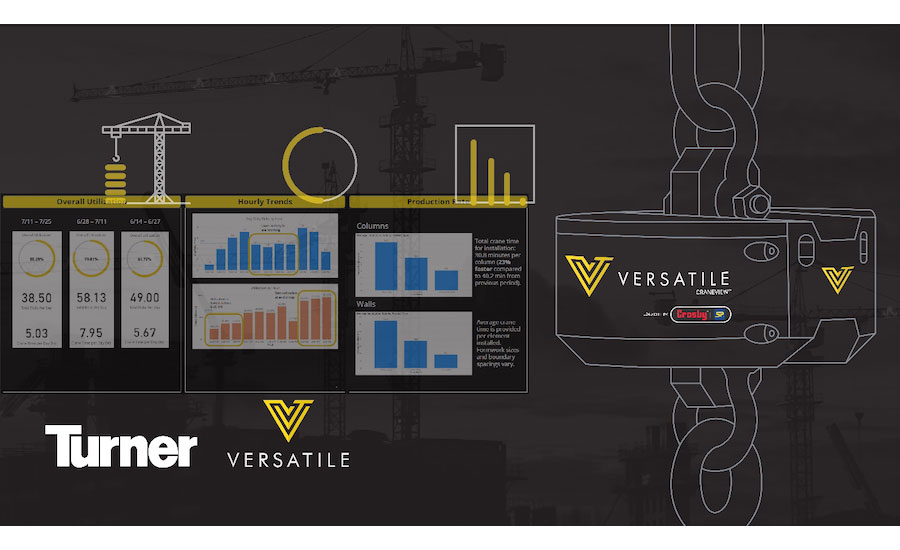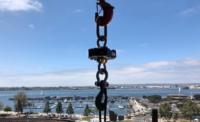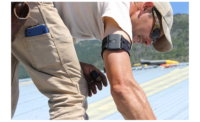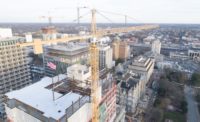Getting the most accurate data on projects while they’re underway is often an endless stream of contradictory information from project superintendents, executive summaries and delayed invoices from subcontractors. Turner Construction—which has already seen some success with a pilot deployment of the CraneView sensor from Versatile last year—has decided to deploy the machine-learning-based system across its projects' cranes.
“The crane is right there at the center of the jobsite,” says James Barrett, Turner vice president and chief innovation officer, who sees CraneView as the key to better awareness of what’s happening on site. “It brings us a level of automation and a greater level of insight, it makes the whole [construction] process more scientific.” Under the new multiyear enterprise agreement with Versatile, Turner will make the CraneView package available to its jobsites across the country.
The CraneView sensor package sits on a load cell that hangs just below the crane hook. With cameras and other sensors, it uses the vantage point of the crane hook to track crane usage and jobsite activity. A cloud-based system uses machine learning to identify various leading indicators of jobsite efficiency and progress, generating daily reports for project executives, superintendents and safety managers on what’s happening on site.
“This is an exciting phase for us,” says Meirav Oren, co-founder and CEO of Versatile. “Turner is a larger scale deployment for us, we have other enterprise deals but this will be our largest to date.” Oren says that Turner was one of the companies early adopters, and there is still much potential for what better actionable data can mean for construction. “Turner is sending a strong message to the industry on where we should be going.”
Turner Sees Practical Uses for AI Tech
Getting more sensors on site has been a goal for many large contractors in recent years, but what to do with the data you’re collecting has been the sticking point, says Barrett. He says that the quick reports generated by CraneView are the sorts of thing contractors should be looking for, rather than vague dashboards that compile too many variables.
“We’re moving into a new phase of AI. This is the phase where we are talking about real-world applications, tailored to real-world problems,” he explains. “Versatile hasn’t gone overboard on AI, they train AI to look at images from the crane. It’s really smart, really clever of them to focus on one problem, and grow from that.”
Barrett says that Turner has looked at many AI systems targeting construction, mostly attempts to automate aspects of planning and estimating. But these approaches often don’t gel well with the human experts, he says. “Our people agree that [CraneView] helps them be better at their job,” he says. “A lot of AI solutions try to replace people, this is bout helping humans do their job better.”
And while CraneView is mostly intended to give project teams better data to work smarter, Barrett hasn’t ruled out it helping Turner accelerate its use of lean construction. “Turner is not unique in that regard, the industry is adopting lean methods,” he says. “But it’s a nice convergence with the generational shift that is happening as well—the younger generation is way more tech-savvy, and looking for new ways to build. They want to build in a different way than in the past, and their embrace of technology is only going to accelerate."






Post a comment to this article
Report Abusive Comment